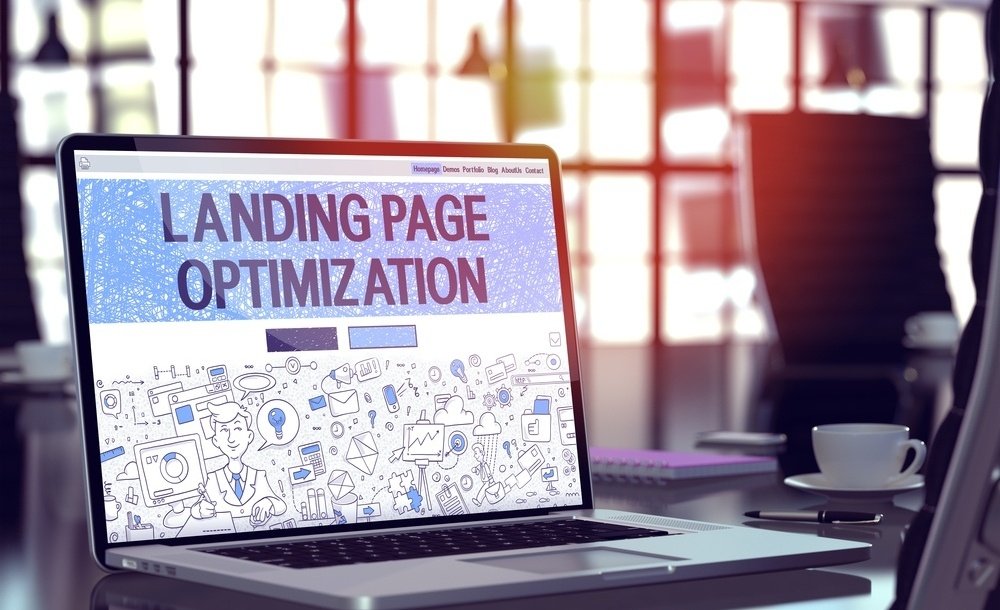A long, long time ago, the digital property that would come to be known throughout the online marketing world as a B2B landing page came into being. And it was good. Well…kind of.
The good thing was that leads were no longer forced to wade through pages and pages of web content in order to download an eBook, checklist, white paper, report, guide, or other asset. The bad thing was that most B2B landing pages weren’t well-designed. Some were bloated and ponderous. Others were incoherent and impenetrable. Many were succinct to the point of being cryptic (kind of like landing pages meet fortune cookies). And almost all of them asked for way too much information, far too soon.
And you know what? Most B2B landing pages are STILL making these mistakes — which means that businesses are bleeding prospects in their pipeline instead of improving conversion rates. And we won’t even mention (well, I guess we are) how difficult it is for sales reps to meet their quota when B2B landing pages are a liability instead of an asset.
Fortunately — and mercifully as far as sales reps are concerned — B2B landing pages have been around long enough to reveal what works, and just as importantly, what doesn’t. And so, based on our experience creating hundreds of very successful B2B landing pages for our clients nationwide, here are 5 best practices that combine to make the difference between converting and bouncing leads:
B2B Landing Page Best Practice #1: Understand that a Landing Page Isn’t Conventional Web Copy
Landing pages are never the starting point of the buyer’s journey. That’s why they’re called landing pages: leads are coming (i.e. landing) from somewhere else, such as a PPC ad, a Google search, an article link, or web copy (either on the same website or an external one).
As such, the content must enable leads to hit the ground running and use this momentum to push them into taking specific action (more on this in a moment). Think of it like a relay race. Landing pages aren’t the first runner or the last — they’re in the middle, and they have to be crafted to function accordingly.
B2B Landing Page Best Practice #2: Be Very Specific About the Landing Page Offer
Landing pages exist to offer something to leads — whether it’s an eBook, report, white paper and so on. As such, while it’s fine (and frankly, necessary) to have a brief introduction, the heart and essence of the landing page must be to push the specific offer.
Landing pages that attempt to perform double duty by catering both to incoming leads and regular leads invariably fail to impress either audience. Incoming leads get confused, because they don’t clearly and quickly see what the proceeding ad, link or web copy promises. And regular leads find the experience hyper-aggressive, since the content tells them take an action that they haven’t already decided they want to do.
B2B Landing Page Best Practice #3: Visuals Matter — but Don’t Get Cute
Yes, information design and visuals matter when it comes to B2B landing pages. Giant walls of text or pages that look circa 2002 don’t cut it. And we won’t even get into discussing ClipArt.
However, some B2B landing pages are more like graphic design contest entries. These pages are beautiful — but they’re also distracting, because they compete for attention with the content and steal focus. They also take longer to load, especially for some B2B leads who are surfing from behind a corporate firewall and must work through massive amounts of bloated, memory-hogging anti-virus software that scans and parses everything. Put it this way: a landing page that takes 30 seconds to load is taking 25-28 seconds too long.
B2B Landing Page Best Practice #4: Keep the Gate Short and Simple
Every business would love to use B2B landing pages to capture psychographic and demographic information. But using landing page forms to do this is usually a bad idea. The exception is if the asset being delivered is targeted specifically to qualified prospects (not leads) who are down in the funnel. In these situations, it MIGHT be fine to ask for additional information, like buying timeline, budget, and so on.
But for leads coming in through the top (or even the middle) of the funnel, the most that businesses should ask for is a name and email address. Even asking for a phone number is a deal-breaker for many leads who aren’t at all interested in being called by a sales rep simply for downloading an ebook or white paper.
B2B Landing Page Best Practice #5: Test, Test and Test Again
This one is simple, simple and simple (again). Optimize what works, and cut what doesn’t. Then repeat.
Learn More
To learn more about activating these B2B landing page best practices as part of your inbound marketing program, contact the Leap Clixx team today. Your consultation with us is free.
For more information on how to turn your website into a lead generation machine, download our FREE eBook today:
{{cta(‘cb73b3af-eb8c-4962-b1fc-0b6d161a903e’,’justifycenter’)}}





